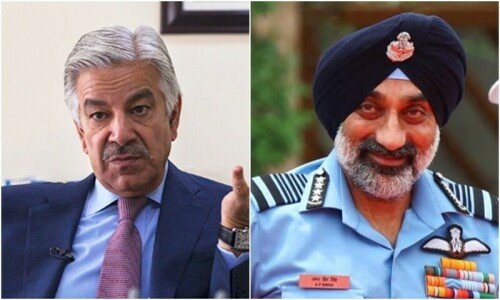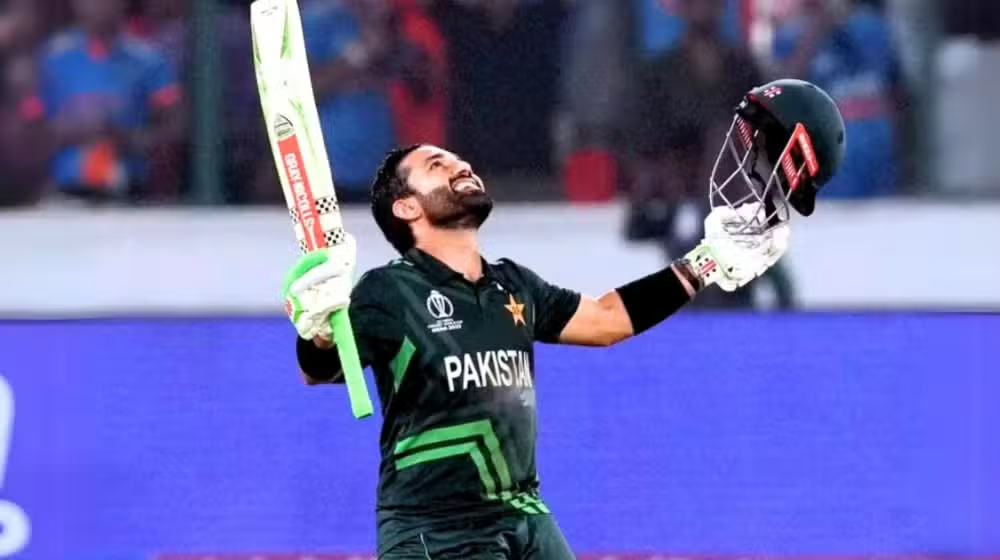Pakistan: Pakistan Rejects Indian Air Force Claims in May 2025 Air Clash

Pakistan: Pakistan Rejects Indian Air Force Claims in May 2025 Air Clash
Defence Minister Khawaja Asif on Saturday rubbished what he said were “implausible” and “comical” claims by the Indian Air Force chief that the country had shot down five Pakistani fighter jets and one other military aircraft during clashes in May.1
The rebuttal comes three months after the worst military confrontation between the two nuclear-armed neighbors in decades, and seeks to set the record straight with technical details, independent confirmations, and counterclaims about the outcome of the conflict.
Background to the Controversy
On August 9, 2025, Defence Minister Khawaja Asif issued a sharp rebuttal after Indian Air Chief Marshal Amar Preet Singh claimed that India had downed five Pakistani fighter jets and one large military aircraft during the May confrontation. The Indian air chief further alleged that most Pakistani losses came from the Russian-made S-400 air defense system, citing electronic tracking data as evidence.
This was the first official statement by the Indian side in three months, despite earlier silence on the matter. Singh also claimed that strikes damaged additional Pakistani aircraft on the ground, including F-16 fighters parked in Sindh and Punjab.
Pakistan’s Response: “No Aircraft Lost”
In his official statement, Khawaja Asif dismissed the IAF claims as “belated” and “politically motivated,” accusing New Delhi of using military leaders to cover up strategic failures caused by “shortsighted” political decision-making.
Asif asserted that “not a single Pakistani aircraft was hit or destroyed” during the May clashes. In contrast, he claimed that Pakistan had shot down six Indian jets, destroyed S-400 missile batteries, and disabled multiple airbases. He further stated that losses along the Line of Control were “disproportionately heavier” for India.
He challenged India to allow independent verification of aircraft inventories from both sides a move he argued would expose the truth behind the competing narratives.
Independent and International Observations
Multiple independent reports and foreign military sources have previously contradicted India’s version of events:
-
French Air Chief General Jerome Bellanger stated that evidence showed three Indian fighter jets, including a Rafale, were lost.
-
The Washington Post, using visual evidence analyzed by experts, reported that at least two Indian Rafale jets were shot down by Pakistan Air Force (PAF) J-10 fighters using long-range PL-15 missiles.
-
The Wire, an Indian news outlet, quoted a senior Indian Navy officer admitting that PAF jets downed Indian fighters during the May 7-10 conflict.
How the May 2025 Conflict Unfolded
The military confrontation was triggered by Indian allegations—which Pakistan strongly denied linking Islamabad to a deadly attack in Pahalgam, Indian-occupied Kashmir.
From May 7 to May 10, both sides engaged in intense aerial combat, including tit-for-tat strikes on each other’s airbases. According to Pakistani sources, the PAF’s J-10 fighters successfully ambushed Indian Rafales by exploiting an Indian intelligence failure about the true range of the PL-15 missile.
India reportedly believed the missile’s reach was only 150 km, when in fact it extended beyond 200 km, enabling Pakistan to strike from a safe distance.
India’s S-400 Narrative vs. Pakistan’s Counterclaim
Indian Air Chief Singh claimed that the S-400 missile defense system was key to downing Pakistani aircraft. However, Pakistani officials and defense analysts have dismissed this claim, pointing out that no verifiable wreckage or independent verification has been provided.
Instead, Pakistan says it targeted and destroyed S-400 batteries in the opening hours of the clash, along with unmanned aerial vehicles (UAVs) used by the Indian military.
Political Context and Strategic Implications
Pakistan has accused India of crafting exaggerated narratives for domestic political consumption, warning that such rhetoric risks “strategic miscalculation” in an already volatile nuclear environment.
Khawaja Asif emphasized that any violation of Pakistan’s airspace or sovereignty would be met with a “swift, surefire and proportionate response”, and that responsibility for escalation would rest entirely on Indian leadership.
Former Pakistani ambassador Dr Maleeha Lodhi also ridiculed the timing of the Indian statement, noting that it took the IAF chief “several months to count the planes” before making the claims.
Ceasefire and Aftermath
The confrontation ended only after American mediation on May 10, 2025, highlighting the fragility of peace in South Asia. Analysts have warned that without open verification and confidence-building measures, such conflicts could escalate again.
Both sides continue to maintain opposing versions of the events, with each claiming victory. However, the international consensus leans toward the view that India suffered notable losses—a narrative New Delhi appears keen to counter.
Conclusion
The May 2025 aerial clashes have once again underscored the dangerous volatility of Pakistan-India relations. With conflicting claims and counterclaims, the absence of independent verification has left room for propaganda to shape public perceptions.
For now, Pakistan rejects Indian Air Force claims, standing by its version that not a single Pakistani aircraft was lost, while pointing to international assessments supporting its account of events.




